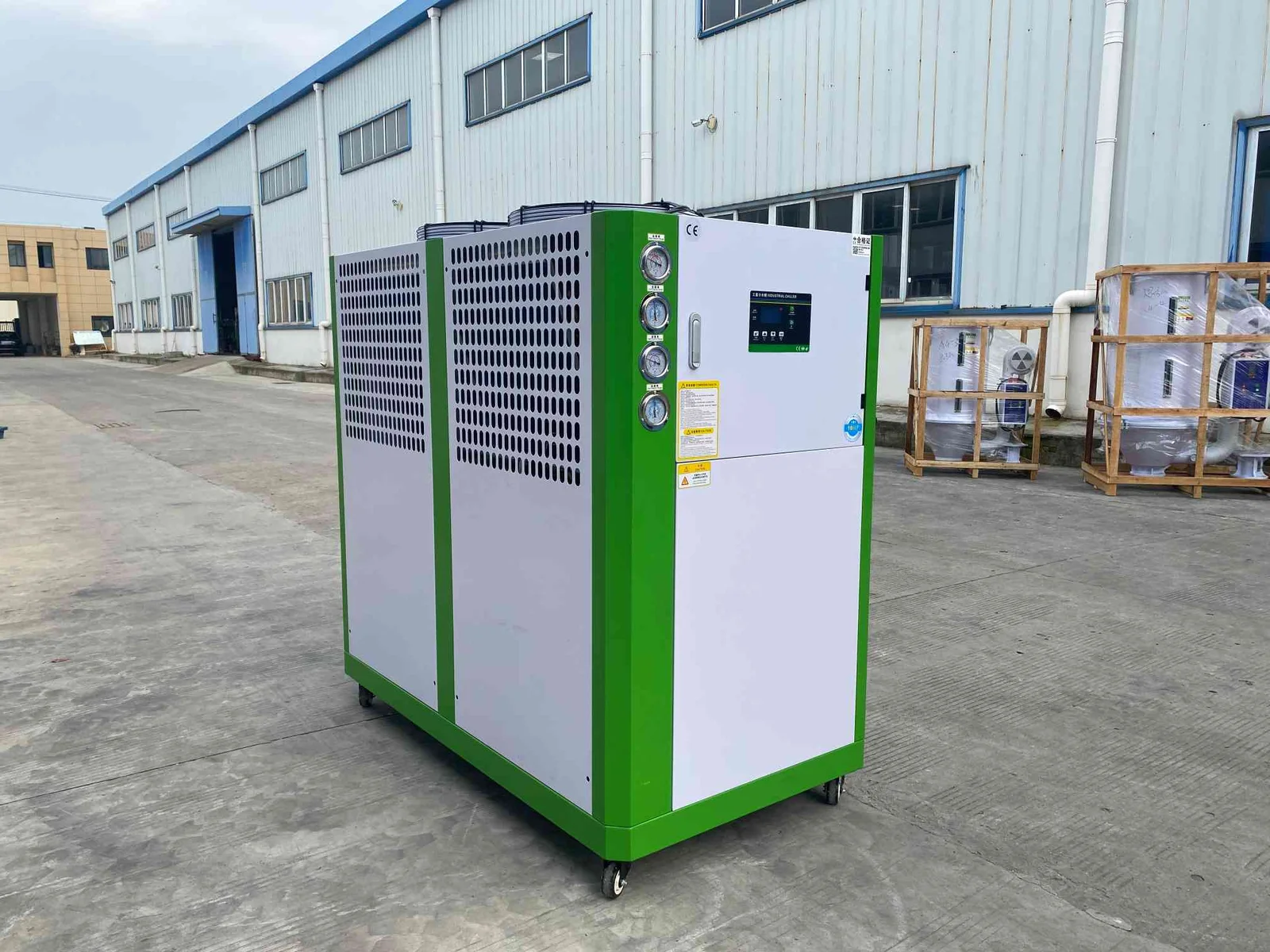Industrial chillers are vital components in a wide range of industries, providing consistent and reliable cooling to support critical operations. These systems are commonly used in plastic processing, pharmaceutical manufacturing, food and beverage production, HVAC systems, and laser cutting applications. By removing excess heat, industrial chiller machines help maintain product quality, ensure safe operating conditions, and improve energy efficiency.
There are two main types of cooling equipment: air-cooled and water-cooled. Air-cooled industrial chillers use fans to dissipate heat into the surrounding air, making them ideal for facilities where water supply is limited or water treatment is not feasible. In contrast, water-cooled industrial chillers use circulating water and cooling towers to transfer heat, offering better efficiency and quieter operation, but requiring more infrastructure and regular water quality management.
Failure to maintain your industrial chiller can lead to severe consequences, such as reduced cooling capacity, higher energy consumption, premature equipment failure, or even unexpected system shutdowns. That’s why regular and targeted maintenance is essential—not only to keep operations running smoothly but also to protect your long-term investment.
This guide presents practical maintenance strategies for both air-cooled and water-cooled industrial chillers. Whether you’re managing a large-scale production plant or a single-unit system, understanding how to maintain your industrial cooling equipment properly can make a significant difference in reliability and cost control.
Common Maintenance Needs and Schedule
Maintaining an industrial chiller involves routine tasks that vary slightly depending on the chiller type. For air-cooled industrial chillers, cleaning condenser coils regularly is critical to prevent dust and debris buildup that can reduce heat transfer efficiency. Water-cooled industrial chillers require careful monitoring of water quality and periodic cleaning of cooling towers and heat exchangers to prevent scale and corrosion.
Key maintenance activities include:
- Daily monitoring of operating pressures, temperatures, and system indicators
- Monthly inspection of electrical connections and lubrication of moving parts
- Quarterly or annual checks of refrigerant levels, safety controls, and leak detection
Following the manufacturer’s maintenance schedule is important to address the specific needs of your industrial chiller model.

Key Daily Maintenance Tasks
Daily maintenance helps identify potential problems early and ensures your industrial chiller operates efficiently. Important daily tasks include:
- Visual inspection of fans, coils, and piping for signs of damage or wear
- Checking refrigerant levels and system pressures
- Monitoring operating temperatures for any unusual fluctuations
- Removing debris around air-cooled chillers to maintain proper airflow
- Checking water flow rates and water quality in water-cooled chillers
Performing these simple checks consistently can prevent downtime and improve the chiller’s overall performance.
Common Faults and Troubleshooting Methods
Even with regular maintenance, industrial chillers can encounter issues that disrupt performance. Understanding the most common faults—and how to respond to them—can help you minimize downtime and avoid unnecessary repairs.
For air-cooled industrial chiller, the most frequent issues include:
- Clogged condenser coils, which reduce heat exchange efficiency and can trigger high-pressure alarms
- Fan motor failure, leading to insufficient airflow and rising internal temperatures
- Refrigerant leaks, often detected through low-pressure readings or decreased cooling performance
For water-cooled industrial chiller, common faults include:
- Scaling or mineral buildup in the heat exchanger, which restricts thermal transfer
- Corrosion in water circuits or fittings due to poor water treatment
- Pump failure or flow imbalance, which can cause erratic temperatures or flow rate alarms
When troubleshooting, consider the following steps:
- Check system alarms and error codes, which often indicate specific fault areas
- Use pressure gauges and temperature sensors to confirm whether the chiller is operating within normal ranges
- Inspect for leaks, listen for unusual sounds, and look for signs of wear on moving parts
For example, if your chiller is running but not cooling effectively, the issue could be a refrigerant leak, blocked airflow, or poor water circulation. If the unit is frequently cycling on and off, it may be due to a faulty thermostat or incorrect setpoint configuration.
While basic checks like cleaning filters, tightening fittings, or resetting control panels can be done in-house, complex faults involving electrical systems, compressors, or refrigerant handling should always be addressed by a certified technician. This ensures both safety and compliance with industrial cooling regulations.

Tips to Extend the Lifespan of Your Industrial Chiller
To keep your industrial chiller running efficiently for years, it’s important to combine regular maintenance with smart usage practices. Key tips include:
- Avoid overloading the system: Running the chiller beyond its designed cooling capacity can strain components and shorten its service life.
- Keep filters clean: Regularly cleaning or replacing air and water filters helps maintain proper airflow and water quality, reducing the risk of fouling or corrosion.
- Use monitoring tools: Install sensors and automated controls to track operating conditions and spot irregularities early.
- Schedule preventive inspections: Periodic checks by qualified technicians can catch hidden issues and ensure long-term reliability.
These steps help improve reliability, reduce energy use, and prevent costly breakdowns.

Summary and Recommendations
Maintaining industrial chillers, whether air-cooled or water-cooled, is essential for efficient operation and long-term reliability. Regular cleaning, routine inspections, and timely servicing help prevent common faults such as leaks, scaling, and mechanical failures. Paying attention to daily maintenance tasks and troubleshooting minor issues early can avoid costly repairs and downtime.
Following manufacturer guidelines and investing in preventive maintenance extends equipment lifespan and improves energy efficiency. Incorporating sensors and professional inspections further safeguards your investment. By adopting these maintenance tips, you ensure your industrial chiller delivers optimal performance and supports your operations effectively.
